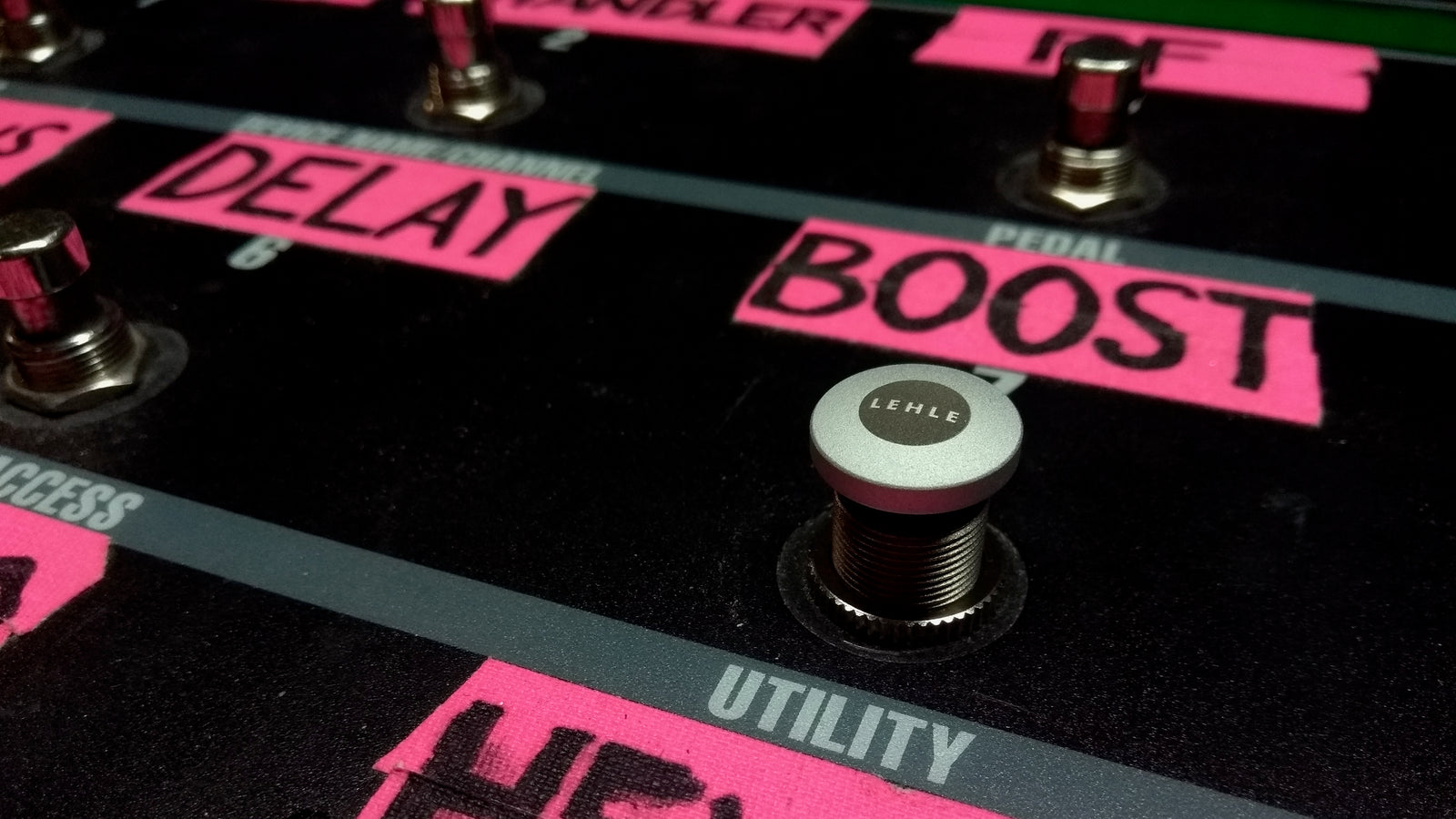Matamp, Green, Orange and Stoner Rock
December 25, 2013
I WAS VISITING Frankfurt Musikmesse in 2013, when I stumbled across a familiar looking amplifier. It looked like a Matamp or old Orange, but it carried a different brand name and it was coloured differently, too.
“What do we have here?” I thought to myself. The sign next to it said “Hayden Amps”.
Just as I was kneeling down to look inside the amp’s back I was approached by a friendly young man. I introduced myself, and was informed that Matamp’s original designer, David Green, was now working for Hayden Amps. Interesting; could the same David Green have been behind the Green Amplifiers that were favoured by Stoner Rock legends Sleep?
I had been trying to order Matamp amps for sale for the last six months. My e-mails have always been answered by somebody called Hayden. Surely, this must be some other Hayden, I thought to myself. We hadn’t been able to get any Matamps for quite some while. This started me thinking:
Who is manufacturing Matamps these days? Why can’t I get hold of any models? I grabbed myself a copy of Orange Amp’s company history at their booth, and returned to my hotel room.
My thoughts kept going around. Who is David Green? Who is this Hayden fellow? Did Orange and Matamp have anything in common? Even though I had been walking the whole day at the fair, I couldn’t sleep yet. I had to google for hours for information on those amplifiers. Some of the stories I found on the Net seemed to contradict each other, others sounded plain strange. As I had just bought the company that had been Orange’s distributor in Finland for a number of years, I decided to get to the bottom of all of this. All I had to start me off was my correspondence with Matamp, my own experiences, and the depths of the Internet. Who would have though the story would turn out to be so convoluted?
THE BAND SLEEP AND THEIR GREEN AMPS
Californian band Sleep’s second album Holy Mountain was released at just the right time. The year was 1992 and heavy riffs in the vein of Black Sabbath were clearly becoming en vogue again. These were the early days of Stoner Rock. Sleep was mainly steered by guitarist Matt Pike (also a member of High On Fire) and bassist Al Cisneros (also with Om). The band’s music drew heavily on Black Sabbath’s legacy. You could even see Laney stack in their backline on early clips of Sleep performing their song "Dragonaut" – so they seemed to be looking for classic British tones. Black Sabbath are the godfathers of Stoner Rock, which makes it clear why the band’s vintage sounds are a key to success in the genre.
In 1970 Orange’s founder, Cliff Cooper, managed to persuade the makers of the classic German TV Show Beat Club that the company would supply Orange amplifiers as their studio backline. That year Black Sabbath appeared on Beat Club. They could have taken along their own amps, but they decided to give their roadies a day off and use the studio’s backline.
The classic video recording of Sabbath’s appearance in Radio Bremen’s studio turned on every Stoner Rock fan some twenty years later. Black Sabbath playing through extremely cool-looking orange-coloured stacks. The ban must have liked what they heard, and they promptly switched to Orange Amps as their brand of choice. This became the magic sound that every Stoner Rock enthusiast anywhere on Earth wanted to capture. Problem was you couldn’t get hold of the amps.

When they made it to Britain Sleep’s member soon found out that Matamp really was in business – still working in the same small place, called Huddersfield, in North England, where it had been founded. Matamp’s new owner was a man called
Jeff Lewis
This part of music history is told in many different versions. Jeff Lewis himself claims to have been a very close friend of Matamp’s founder Mat Mathias. Mat’s widow, Ruth Mathias, on the other hand states that the two had never met, and that Lewis was not connected to Matamp at all before 1994.Jeff Lewis was a local upholsterer and record collector, who managed to acquire what was left of Matamp very cheaply after Mathias’ death in 1993. As a local Lewis of course knew the true worth of the Matamp brand. He set about reorganising the old Matamp premises and restarting production, taking advantage of the wealth of leftover parts he had acquired in the deal. Lewis was very keen to come up with a new amplifier that would continue the Matamp legacy.
Probably in an attempt to profit from the rise of interest in Orange amps at that time – and because Matamp and Orange share a chunk of their history – the new amp was clad in green and labelled the Green Matamp.
When Sleep came to Huddersfield they literally bought all of the stock of brand-new Green amplifiers. The band were sure to have struck gold, which is why no costs were spared. In reality, the band’s “new” amps were simply relabelled and re-Tolexed GT-series models that Lewis had scraped together using old stock. Sleep also bought a few amps that were yet to be finished, and Jeff Lewis promised to ship them to the band’s address in Santa Clara, USA.

Sleep had just signed a record deal with the London Records label, and managed to spend nearly all their advances on their amps. According to band lore half of the 70,000 dollars was spent on amps, with the rest used for lots of marihuana, inspiring their next album, called Dopesmoker.
This hard-riffing band had been crafting their upcoming masterwork for months on end, and they were planning to make the most of their newly-bought amplifiers in the studio. Thanks to Sleep the new Green Amps brand got an incredible image boost. Word of mouth quickly spread, and Green quickly became mentioned in the same breath as Black Sabbath’s hallowed Orange Matamps. Is there any truth behind the near mythical cult status of these amplifiers?
THE HISTORY OF ORANGE AND MATAMP – PART 1
German-born Mat Mathias was evacuated to England at the start of WW II in 1939. After first settling down in Leeds, and then spending some time in Bradford, he finally settled in the Northern-English hamlet of Huddersfield, about halfway between Manchester and Leeds. He soon started working as a TV and radio repairman. A few years later Mat’s boss wanted to retire and offered him a chance to buy the business. Mat agreed and managed to buy the company in instalments.

Very soon Mat needed additional employees, and one of his recruits happened to be a guitarist. They hit upon the idea of developing a guitar amplifier together for the burgeoning British Beat scene. The first Matamp model was introduced in 1962, and the brand started to make inroads into the music scene slowly but steadily. It didn’t take long before another important man to stepped into Mat’s life.
Cliff Cooper
Cliff Cooper was a genuine renaissance man in the field of music. In 1969 he planned on opening a new music shop in London. To fly the flag of the psychedelic revolution sweeping the country, he decided to paint his store’s facade bright orange. He also came up with a psychedelic company logo for his Orange brand.

After a few unsuccessful meetings with other small makers, Cooper found his to Mat Mathias in Huddersfield. The two gentlemen came to an amicable agreement, and Mat quickly started producing Orange amps. The first prototype was given Fleetwood Mac’s guitarist Peter Green. He used his new Orange to record the groups hit instrumental "Albatross", laying the cornerstone for the fledgeling brand’s future success.
The demand for Orange/Matamp products spread like wildfire. Fleetwood Mac set off for a tour of the USA, and Mat was employed as their amp technician. One important observation Mat made on this tour was that the amp’s chassis should be changed from aluminium to steel. He also had trouble with control knobs being damaged and pots bent during transport, which is why he invented the idiosyncratic metal handles that stick out from Orange and Matamp models. After the tour Mat also added a larger power amp section, and the classic Matamp/Orange was born – the now iconic GT-120. This quickly became the choice of many British working guitarists.

IN 1995 SLEEP HAD RETURNED HOME. The band secluded themselves in a recording studio all summer long. The sessions kept going on and on, and when the dust finally settled, the band left the studio carrying a piece of Rock history. The master tape contained only a single track, with a running time of just over 63 (!) minutes.
Sleep’s record label sadly didn’t share the band’s enthusiasm at their musicianship; instead they refused to issue the record in its current form. The label demanded the band edit their masterpiece down to a more “commercial” length, and to change the record’s name. Still, even after a number of edits had been made, the track was still 52 minutes long. Now the album was called Jerusalem, but it still didn’t make the grade. The record company refused to issue the record, claiming it was not marketable. This left the band between a rock and a hard place.
The cost of the lengthy studio time wasn’t their only problem, though. Their British amps were extremely unreliable and had to be repair constantly. Jeff Lewis had promised to finally deliver the rest of the band’s amps, but deadlines kept passing with no amplifiers in sight. The Green amps the band already used were staring to fall apart at the seams. Finally the band turned to an amp technician they knew to refurbish, repair and improve their amps.
SLEEP SPLITS
In the end the sleep members got so frustrated with the lengthy negotiations with their label that they decided to split. Their record stayed unreleased for many years to come. When Matt and Al finally took delivery of their new amps, the band had already split into different camps. The fact that their Green models had proven to be so unreliable, and that part of their order took years to arrive, was probably a factor in Sleep’s break-up. In their minds the British amp maker was a fraudulent company.While the Sleep members continued to live as legends, and while their Dopesmoker album languished in the record companies vaults, the legend of Orange and Matamp just kept on growing.

THE HISTORY OF ORANGE AND MATAMP – PART 2
Spring was in full swing in England in April 1970. Cliff Cooper was a networker, long before the term was coined – he seemed to know everybody that was anybody in the music business, which kept the orders coming in, which in turn kept Matamp afloat. Mat Mathias, the modest engineer, and Cliff Cooper, the extrovert businessman, tended to run into many conflicts, though. Mat used to deliver his amps in batches of five or six in his battered old Ford Cortina 1600E, which wasn’t what Cooper had in mind, when he thought of a well-oiled business partnership.

In 1971 Orange/Matamp for the first time sold more amps than Marshall. Nevertheless, Mat Mathias didn’t manage to satisfy Cliff Cooper’s continuing demands for more streamlined production, which is why Orange’s cooperation with Matamp came to an end. The Matamp-logo was deleted from all Orange amplifiers with only the Orange-logo displayed.

ORANGE AND MATAMP GO FOR A SECOND ROUND
In 1993 – 22 years later – Orange and Matamp tried to rekindle their partnership. Matamp’s new owner Jeff Lewis rang up Cliff Cooper, whose business had dwindled considerably by then. The two decided to produce a range of new Orange/Matamp models, just like in the good old days of Mat Mathias.Their new model range was marketed under the “Orange – Voice of the World” -banner. They managed to close a distribution deal to the USA by licensing the brand name to Gibson Guitars. Gibson wanted to keep production in Britain to retain the legendary “Made in England” label on the new amplifiers.
Lewis’ and Cooper’s partnership failed spectacularly. The new amps had been designed haphazardly and didn’t sound like the originals by any stretch of the imagination. It’s hard to put it any other way: These amps were really bad. Financially the partnership left both on the brink of bankruptcy, which is why the men went separate ways once more.
Jeff Lewis’ Green Amps never became popular either. He had hoped the Green-brand would be able to ride on the legendary Peter Green association, but things didn’t turned out as he had hoped. His amps got a cult following in North America, but Lewis never managed to get his production up to speed.

Joel Wheeler
American Joey Wheeler had had enough of his nine-to-five job. He was a passionate guitarist, an amp connoisseur, and a huge Sleep fan. Wheeler had been to a number of Sleep shows in the early Nineties, and he had even been following the band around on tour for a little while. After a show in Portland he got a chance to discuss Green amplifiers in depth with the band. Wheeler was completely smitten by the sound of these amps, even though they proved unreliable. On his way back home to Spokane he decided to order his own Green Matamp GT-120. When the head arrived he took a close look at the internal wiring and fell in love with the amplifier.After a few years of pondering Wheeler finally rang up Jeff Lewis in 1997 to offer a business partnership, just as Lewis was planning to wind down the company after the catastrophic deal with Cliff Cooper. The phone rang, and a very enthusiastic guy with a US-accent offered his services at Matamp’s US distributor. Lewis started believing in his amps again.
Because Lewis didn’t have any finished products to sell, he offered Wheeler a whole shipping container full of sundry parts and half-finished chassis to get him started. These were all leftovers from the Orange/Gibson debacle. Lewis planned on refurbishing the amps in green Tolex and finish the wiring, before shipping them to Wheeler, who would then take care of the rest. They also planned on introducing a special Matamp model for the US market only. The photo below gives you an idea of what Lewis’ workshop looked like.

Matamp USA
Joel Wheeler moved the company to Las Vegas and put up one of the first company websites on the then-new Internet. The first shipment contained 20 amp heads and 24 speaker cabinets. As soon as the amps arrived in the USA, Wheeler had them all photographed and analysed. Some required modification and/or repair. The overall aim was to release a coherent model range on the American market.To show his commitment Wheeler managed to get the Matamp.com website up and running in a mere three days. Lewis was thrilled. In 1998 the offices in England and the USA agreed on an exclusive distribution deal for Matamp products, which would be made in Britain and sold to the world via the USA.
Matamp USA started promoting the amps in the States in January 1999, and the company also sent press releases all over the world. There were news items released in Vintage Guitar and Guitar World. Wheeler and his staff really put their backs into spreading the word about Matamps.

The rising Indie scene in the US also made an impact when it came to Matamp USA, thanks to Wheeler’s contacts among Stoner bans and fans. For example two record important record companies – Man’s Ruin and Small Stone Records – publicly pinned their colours to the Green Amp cause, by releasing several album covers featuring the amps’ iconic design or even the company logo. Green and Matamp shirts were worn onstage, and the brand looked hipper than it ever had over its history. Things seemed to move in the right direction.

PROBLEMS WITH THE MODEL RANGE
Sadly, many Green amps reaching the States still had to be modified drastically. There were many problems. Wheeler had to have each and every amp opened up, trying to streamline the brand’s model range. He copied down many wiring schematics in an effort to make sense of the different models. It was very important that the amps’ specifications were the same across the range for Matamp USA to be able to widen their network of retail outlets. Wheeler was aiming at implementing the necessary changes before the end of that year. Each shipment that arrived in the USA prompted another long letter from Wheeler to Lewis.

Dave Green
Thanks to the advances the USA bureau was paying for the equipment it ordered, Lewis was able to hire additional people to help with production. Without doubt the most important new team member was an engineer named Dave Green (Nomen est omen, as the old Romans would say).
Dave had become fed up with his work at Ashdown Engineering and was hired by Lewis in 1999. Dave managed to track down Mat Mathias’ original schematics, which in turn meant Matamp could start building the GT-120 head to “original” specifications. Dave Green and Joel Wheeler got the first few Matamp GT-120 “Legend” Master Volume heads out to dealers in late 1999.

Circuit schematics
Dave Green wasn’t really into drawing circuit schematics, which is why Wheeler’s Matamp USA staff had to supply him with the drawings they had made from the amps they had received. Even though Dave Green was a technically very accomplished, the exact specifications of each amplifier leaving the factory drifted to some degree. Matamp USA tried as hard as they could to get the British factory to stick to the correct specifications, by sending detailed drawings, instructions and lists of the correct parts back to England. A lot of time and effort went into sending updated schematics across the Atlantic ocean. Wheeler main concern was still to come up with a sensible model range, and to get the factory to built more vintage-style Matamp GT-120 heads, for which worldwide demand was steadily rising. A lot of work was spent on getting the amps’ looks back into line with vintage specs, especially the cabinet outlines and the famous metal handles/rails, which were a hallmark of the brand.

BLACK AND WHITE MODELS
In spite of this push to get the range streamlined Matamp USA also introduced classic and new amps sporting different looks. Black Amps were introduced in 1999, while White Amps came out in 2000. These new amps didn’t really do anything for making the Matamp model ranges easier to understand.

NEW PROBLEMS AHEAD
The small factory in Huddersfield was now the hottest amp maker in Britain. Dave Green’s reputation as the coolest amp designer of the recent decade grew exponentially. He was hired to design amps for many English brands, such as Hiwatt and his old employer Ashdown.Unfortunately the Huddersfield building had to undergo extensive building repairs in early 2000, which led to unforeseen delays in the production of the amps Matamp USA had already paid for. Bowing to the extreme pressure Jeff Lewis had to come up with ways to satisfy the huge demand from across the Great Pond.
THE NEW BATCH ARRIVES
After a long and stressful wait the next batch of amplifiers arrived in the USA, and Joel Wheeler went ballistic. All of his instructions and wishes had been completely disregarded. The new amps were completely different to what had been agreed. Further investigation made it obvious that the factory had used a hodgepodge of parts from a number of suppliers.With a little bit of insight it was clear that these Matamp models used parts and elements taken from Marshall Majors, Hiwatts, Ashdowns and old Sunn amplifiers. It doesn’t take a genius to see that the head pictured below has been covered in Ashdown’s special covering.

Wheeler was in a difficult spot. He had a filled order book, but a heap of wrong products, and all of his money invested in the British facility. What could he do, but simply sell the batch of mongrel Matamps, even though this would inevitably mean a loss of brand prestige and trust. It seemed like his years of work for Matamp and the Green Amp brand had been in vain. Wheeler’s goal of a production line reliable Green model range seemed further than ever.
PULLING THE EMERGENCY BRAKE
There were plenty of discussions between the main players on both sides of the Atlantic, but it seemed common ground was increasingly more difficult to find. Wheeler was puzzled why Huddersfield had difficulty in making a run of identical amps. Wheeler still believed that people wanted to buy the traditional GT Series models Matamp had become famous for. Huddersfield, on the other hand, wanted to concentrate on lower wattage heads and combos. Wheeler was frustrated because the English company didn’t seem to get anything done. Lewis, for his part, accused Wheeler of demanding too much of them. The clip below gives you an idea of the factory in England (narrated by Jeff Lewis himself).
Jeff Lewis’ enthusiasm for amplifier production had dimmed considerably. He jumped at a publisher’s offer to release a book on Matamp’s history, and concentrated all his efforts on planning and writing this book from late 2005 onwards. When Jeff stepped aside the door was open for David Green and John Tilley (the company’s sales manager) to step up to the plate. They planned on saving Matamp’s reputation by producing a new range of amps in close cooperation with Matamp USA.
Electric Amps
Joel Wheeler now was sure of one thing: If he wanted to run a successful amp business in the USA, he had to have control over all the pieces of the puzzle. Over in England Dave Green had already started working regularly for other British amp makers. Nonetheless, Wheeler tried hard – and finally succeeded – in getting Green back to the drawing board for a new range of products.Shipping bulky speaker cabinets had long become a financial burden, which is why Wheeler had quietly started outsourcing the production of cabinets to an American company, called Electric Amps. He decided to use the same brand label for the upcoming new amp heads. Electric Amps rose from the ashes of Matamp USA. Dave Green put his all into the project, designing the new models exclusively for Electric Amps. This amp series would become the swan song of the Anglo-American joint venture.

When Dave Green delivered the first (and final) batch of 14 Electric Amp heads to the USA, history repeated itself. The amplifiers looked great, but weren’t really close to what Wheeler had ordered. In practice the heads were re-Tolexed Green Matamp heads, and they featured many differences from one amp to another.
Wheeler was baffled. How could it be so difficult to build a batch of amplifiers that were all true to the same specifications? He decided to shift all future production of Electric Amp heads to the States. Below is a picture of Wheeler’s own version of the iconic design.

MATAMP UK LICKS ITS WOUNDS
With no more money coming in Jeff Lewis was unable to pay his staff’s salary, and production was wound down. Dave Green’s last batch of Matamps were nine reissues of Mat Mathias’ original S2000 amp head. With production down to almost zero, and with a heavy heart, the original amp designer of the second generation of Matamp amplifiers, Dave Green, resigned in 2007.

The rest of the Matamp staff left the company one by one. Sales manager John Tilley started his own amplifier company, Wienbrock Amps, taking many Matamp veterans with him. The small maker has made a name for itself, mostly in Britain.

Jeff Lewis managed to cling on despite everything. In 2006 he managed to release a range of mini-amps under the Matamp UK banner, and he also finished his book, which contains his version of events.

In his book Lewis claims that Matamp was England’s oldest guitar amplifier maker, founded in 1946. Many people in the musical instrument business find this claim strange to say the least. He also puts his own spin on the USA adventure, which isn’t really surprising.
MATAMP TODAY
Jeff Lewis didn’t give up, and continued building amplifiers with a new crew. Dave Green was followed by a new chief designer, called Martin Whelan, who didn’t last long at Matamp. He left to start his own company – Martamp – which is known as MJW Amplification these days. The next engineer Jeff hired was Harold Bush.In 2008 Matamp surprised many people in the business by exhibiting at Frankfurt Musikmesse. In the clip below Jeff shows us himself how a Matamp speaker cabinet is made.
A COURT BATTLE
In 2010 Matamp UK went to court over the use of the matamp.com domain name. The WIPO came to a decision in a mere 30 days, and ruled in favour of Matamp USA. During these proceedings it was discovered that Jeff Lewis had tried to orchestrate a cyber attack against Matamp USA with the help of a Canadian distributor. They had also put up fake Electric Amps websites spreading false information regarding the company. At the time of writing these sites have been closed down.
THE FRANKFURT FAIR IN 2013
Right before the start of Frankfurt Musikmesse in 2013 – which served as a catalyst for this article – I called Matamp UK to enquire about our order.The phone was picked up by a very friendly gentleman – Matamp’s main main Jeff Lewis. He told me they had some old stock left in their warehouse that he could ship to us. Very quickly, he claimed. Additionally, we could order any amps we’d like. He asked me to confirm our order via e-mail. We sent our order promptly, and started to wait. And we waited a little longer – nothing. I checked our spam mail filters repeatedly – nothing. We never got a reply or an order confirmation. Like so many before us, we never received the products we had ordered. Thankfully, we never paid in advance either. I looked at the used Matamp that gathered dust in the corner of our shop. What model is this? Who has built it? Most likely, I will never find out.
EPILOGUE
- Matamp USA only sell used amps and part these days. Joel Wheeler owns an amazing collection of old Matamp and Orange amplifiers.
- Electric Amps is still operational, so I’m told, and still owns the trademarks for Green, White and Black Amps.
- Matamp UK has received advance payments for approximately 1,000 amplifiers over the years, some of which have never materialised. Strange, but true, Jeff Lewis has never taken an active role in amp production, except in covering amp and speaker cabinets. At the moment of writing, amps are built to order. Delivery times are very long.
- Sleep’s Jerusalem was released in 1999. The original, longer Dopesmoker finally came out in 2003, with a definitive remaster of this weed-induced masterpiece released in 2012. The double-vinyl release was accompanied by a Sleep tour of the USA and Europe. The band played Marshall amplifiers.
Here are three of my favourite Matamp mess-ups:
- Matamp UK sent an amplifier straight to a US retailer. The amp had a Green Amp -logo, but was finished with orange Tolex.
- Somebody bought a “brand new” GT-120, which in reality looked like a refurbished 20-year old club circuit veteran.
- A Green amp cabinet combined with an Orange interior containing the wrong type of output transformer.
25.12.2013 Kimmo Aroluoma
The writer is the owner of Custom Boards Finland. He is a veteran guitar tech who has toured for years with Finnish bands HIM, Amorphis, Michael Monroe, The Rasmus and Von Hertzen Brothers. Today he designs pedalboards and runs his own webshop in Helsinki, Finland.
*****
Also in Custom Boards Blog

Ursus Factory and the Sixth Generation of Guitar Rock
June 10, 2021
I've been noticing clear signs of me turning into an “old fart” over the last few years. It’s only a few short months before I will turn 50, and it seems ever harder beam myself back into my 30-year old “hippy” state of mind. Am I – is Custom Boards – still a relevant player in the eyes of the new wave?

Revolutionizing the market - Lehle Components
May 09, 2020
German engineer Burkhard Lehle unveiled his plans for the Lehle Components a few years ago at 2014’s NAMM Show. He would release his own line of audio components, which will include brand-new designs alongside his older inventions.

Unforgettable Gigs – Part 1: Amorphis in the Balkans
April 27, 2020
Amorphis’ manager, Jouni Markkanen told me to be extremely careful, and made me clear that I had to have the gig fee in my hands, in cash, before allowing the band to leave their hotel for the venue.
Liity postituslistalle ja saa ajankohtaiset sisällöt suoraan sähköpostiisi.

